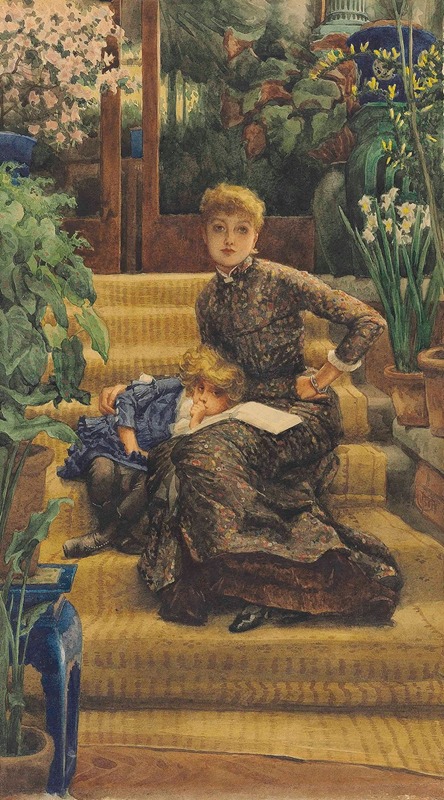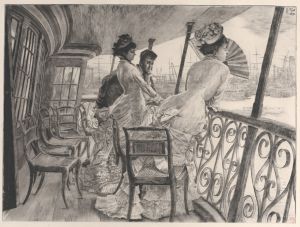
La Soeur Ainée
A hand-painted replica of James Tissot’s masterpiece La Soeur Ainée, meticulously crafted by professional artists to capture the true essence of the original. Each piece is created with museum-quality canvas and rare mineral pigments, carefully painted by experienced artists with delicate brushstrokes and rich, layered colors to perfectly recreate the texture of the original artwork. Unlike machine-printed reproductions, this hand-painted version brings the painting to life, infused with the artist’s emotions and skill in every stroke. Whether for personal collection or home decoration, it instantly elevates the artistic atmosphere of any space.
James Tissot, a French painter known for his detailed and fashionable depictions of contemporary life, created the painting "La Sœur Aînée" (The Elder Sister) in the late 19th century. Tissot was born on October 15, 1836, in Nantes, France, and he became a prominent figure in both French and British art circles. His works often reflect the social dynamics and fashion of the Victorian era, capturing the nuances of modern life with a keen eye for detail.
"La Sœur Aînée" is one of Tissot's many paintings that explore themes of family, social roles, and the complexities of human relationships. The painting depicts an intimate domestic scene, focusing on the relationship between siblings. The elder sister, as suggested by the title, is portrayed in a nurturing role, which was a common expectation of women during the period. Tissot's ability to capture the subtleties of expression and body language is evident in this work, as he conveys the protective and caring nature of the elder sister towards her younger sibling.
Tissot's style is characterized by his meticulous attention to detail, and "La Sœur Aînée" is no exception. The painting showcases his skill in rendering textures and fabrics, a hallmark of his work that often highlights the fashion of the time. The clothing worn by the figures in the painting is depicted with precision, reflecting the styles that were prevalent among the middle and upper classes in the late 19th century. This attention to detail not only adds to the aesthetic appeal of the painting but also serves as a historical document of the period's fashion.
The setting of the painting is typically domestic, a common theme in Tissot's work, which often focused on the private lives of women and children. The interior is depicted with a sense of warmth and comfort, emphasizing the familial bond between the siblings. Tissot's use of light and shadow enhances the mood of the painting, creating a sense of intimacy and tranquility.
"La Sœur Aînée" reflects Tissot's broader interest in the roles and expectations of women in society. His paintings frequently explore the tension between traditional roles and the evolving social landscape of the time. Through his work, Tissot provides insight into the lives of women and their relationships within the family structure, making his paintings both visually appealing and socially relevant.
James Tissot's "La Sœur Aînée" remains an important work within his oeuvre, exemplifying his ability to blend narrative content with exquisite detail. The painting continues to be appreciated for its artistic merit and its reflection of the cultural and social dynamics of the 19th century.

















